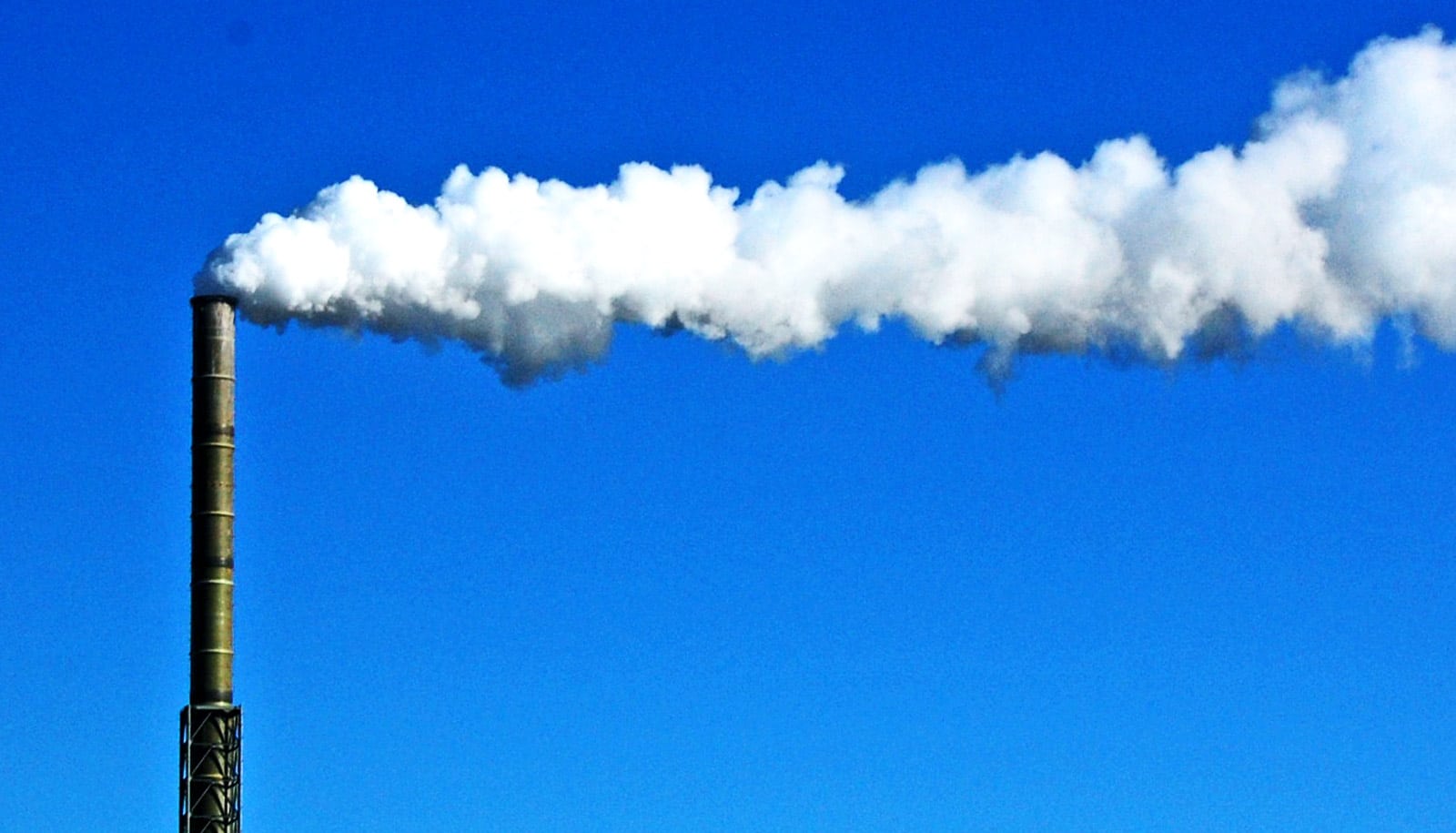Ocean waves inject tiny particles called aerosols into the air—and those aerosols carry organic molecules more than 5,000 years old.
This discovery, published in Science Advances helps to solve a long-standing mystery as to what happens to these ancient marine molecules.
Decades of measurements have revealed that nearly all of the organic matter dissolved in the oceans is surprisingly old—up to several thousand years. But scientists do not completely understand how this ancient organic matter is eventually destroyed.
Lead author Steven Beaupré, assistant professor at Stony Brook University’s School of Marine and Atmospheric Sciences and colleagues performed experiments to show that some of this ancient organic matter can be removed from seawater when wave-generated air bubbles burst on the ocean surface and inject aerosols into the atmosphere.
By directly measuring the radiocarbon (14C) ages of the aerosols, they estimate that somewhere between 19 and 40% of the aerosol organic matter is at least 5,000 years old.
Prior experiments by Beaupré’s colleagues David Kieber of SUNY ESF and Bill Keene of the University of Virginia suggested that old organic molecules might leave the ocean as stowaways aboard these tiny particles.
“Our new study shows that a significant proportion of that organic matter is indeed quite old, and that the formation of aerosols by breaking waves could be a significant removal pathway for the old carbon found in the sea,” says Beaupré.
Carbon storage
This pool of ancient organic matter is massive, holding about as many carbon atoms in the ocean as there are in all of the vegetation on land or in all of the carbon dioxide (CO2) in the atmosphere. It is primarily created by photosynthesis and therefore represents a long-term storage reservoir for atmospheric CO2, a potent greenhouse gas. Therefore, it is important to understand what ultimately breaks down these ancient molecules into something that nature can use again.
Once in the atmosphere, sunlight is likely to break down these aerosolized molecules into CO2 and other molecules that are more palatable to marine life. Accordingly, emphasizes Beaupré, this finding has implications for both oceanic and atmospheric biogeochemistry, as well as the global carbon cycle and climate.
Beaupré also says the results were somewhat surprising because it is generally believed that breaking waves are likely to inject only the youngest organic molecules into the atmosphere. This is because the ancient molecules should have degraded to less reactive forms during their prolonged exposure to the environment.
“Despite the effects of aging for thousands of years, our results suggest that even some of the oldest molecules in the sea can compete with the youngest to grab hold of rising bubbles and rocket into the sky,” he says.
Bubble plumes and aerosols
The research team used a special aerosol generator to study this process during a month-long cruise to the North Atlantic Ocean. The device produced aerosols by closely mimicking the bubbles plumes created by breaking waves, as Beaupré and coauthors describe in a companion paper in the Journal of Geophysical Research-Atmospheres.
They measured the chemical composition and radiocarbon ages of seawater flowing through the generator and of the aerosols that it produced. Combined with measurements of the particle sizes, they concluded that the aerosolized organic matter could survive for about a week in the atmosphere, where winds could carry it, chemically degraded, inland and/or redeposit it in the ocean.
While future research will address the rate at which breaking waves spew ancient organic matter from the ocean, the research team will also investigate other ways in which marine organic matter leaves the sea.
The National Science Foundation’s Chemical Oceanography program contributed funding to the work.
Source: Stony Brook University


